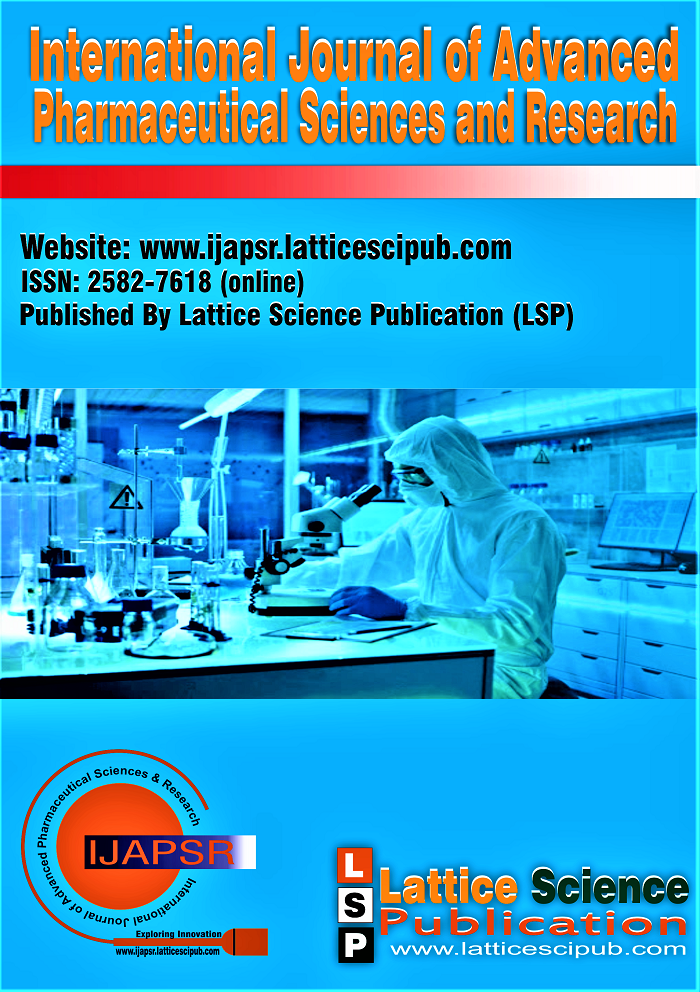Advancing Anemia Screening: Performance of the Aspen Hb Meter Compared to Standard Methods
Main Article Content
Abstract
Anemia, a global health concern with significant prevalence in low- and middle-income countries, poses serious challenges for women of reproductive age, particularly in resource-constrained environments. Early and accurate hemoglobin estimation is critical for timely intervention; however, traditional methods like the cyanmethemoglobin assay and automated hematology analyzers are impractical in decentralized settings. This study evaluates the performance of the Aspen Hb meter, a portable, spectrophotometry-based device, against the Serachem SC-60+ auto hematology analyzer. Hemoglobin levels from 1,280 adult females were analyzed, showing a strong correlation (R² = 0.977) and clinically acceptable agreement in Bland-Altman analysis. The Aspen Hb meter achieved a sensitivity of 98.14%, specificity of 95.80%, and accuracy of 97.57%, with minimal diagnostic errors. Its portability, rapid response, and cost-effectiveness highlight its utility in point-of-care diagnostics and public health programs. This device offers a scalable solution for improving anemia screening and management in low-resource settings, particularly in maternal health initiatives.
Downloads
Article Details

This work is licensed under a Creative Commons Attribution-NonCommercial-NoDerivatives 4.0 International License.
How to Cite
References
Stevens, G. A., Finucane, M. M., De-Regil, L. M., Paciorek, C. J., Flaxman, S. R., Branca, F., ... &Ezzati, M. (2013). Global, regional, and national trends in haemoglobin concentration and prevalence of total and severe anaemia in children and pregnant and non-pregnant women for 1995–2011: a systematic analysis of population-representative data. The Lancet Global Health, 1(1), e16-e25. DOI: https://doi.org/10.1016/S2214-109X(13)70001-9
Ali, S. A., Razzaq, S., Aziz, S., Allana, A., Ali, A. A., Naeem, S., ...& Ur Rehman, F. (2023). Role of iron in the reduction of anemia among women of reproductive age in low-middle income countries: insights from systematic review and meta-analysis. BMC Women's Health, 23(1), 184. DOI: https://doi.org/10.1186/s12905-023-02291-6
Maji, I., Randhawa, J. K., Bakshi, D., Gautam, D., & Mishra, S. S. (2023). Status of Anaemia amongst women in India: trend analysis of NFHS data. Indian Journal of Community Health, 35(3), 354-358. DOI: https://doi.org/10.47203/IJCH.2023.v35i03.019
Munro, M. G. (2023). Heavy menstrual bleeding, iron deficiency, and iron deficiency anemia: Framing the issue. International Journal of Gynecology& Obstetrics, 162, 7-13. DOI: https://doi.org/10.1002/ijgo.14943
Khezri, R., Salarilak, S., &Jahanian, S. (2023). The association between maternal anemia during pregnancy and preterm birth. Clinical Nutrition ESPEN, 56, 13-17. DOI: https://doi.org/10.1016/j.clnesp.2023.05.003
Christian, P. (2021). Anemia in women—an intractable problem that requires innovative solutions. Nature medicine, 27(10), 1675-1677. doi: https://doi.org/10.1038/s41591-021-01514-3
Gasparin, A. T., Araujo, C. I. F., Cardoso, M. R., Schmitt, P., Godoy, J. B., Reichert, E. S., ...& Figueredo, M. V. M. (2023). Hilab System Device in an Oncological Hospital: A New Clinical Approach for Point of Care CBC Test, Supported by the Internet of Things and Machine Learning. Diagnostics, 13(10), 1695. DOI: https://doi.org/10.3390/diagnostics13101695
Ahn, H., Lenet, T., Gilbert, R. W., Mallick, R., Shaw, J. L., Fergusson, D. A., ...& Martel, G. (2024). Accuracy of point-of-care testing devices for haemoglobin in the operating room: meta-analysis. BJS open, 8(1), zrad148. DOI: https://doi.org/10.1093/bjsopen/zrad148
Das, S., &Chakraborty, S. (2023). Simultaneous quantitative detection of hematocrit and hemoglobin from whole blood using a multiplexed paper sensor with a smartphone interface. Lab on a Chip, 23(2), 318-329. DOI: https://doi.org/10.1039/D2LC00456A
Tyagi, S., Mutreja, P., Bajaj, R., & Singh, D. (2022). Haemoglobin Levels Estimation using Aspen Hb Meter. International Journal of Advanced Pharmaceutical Sciences and Research, 2, 5-8. DOI: https://doi.org/10.54105/ijapsr.B4006.022222
Addo, O. Y., Emma, X. Y., Williams, A. M., Young, M. F., Sharma, A. J., Mei, Z., ...&Suchdev, P. S. (2021). Evaluation of haemoglobin cutoff levels to define anemia among healthy individuals. JAMA network open, 4(8), e2119123-e2119123. DOI: https://doi.org/10.1001/jamanetworkopen.2021.19123
Osborn, Z. T., Villalba, N., Derickson, P. R., Sewatsky, T. P., Wager, A. P., & Freeman, K. (2019). Accuracy of point-of-care testing for anemia in the emergency department. Respiratory Care, 64(11), 1343-1350. DOI: https://doi.org/10.4187/respcare.06364
Gupta, A., Wrench, I. J., Feast, M. J., & Alderson, J. D. (2008). Use of the HemoCue® near patient testing device to measure the concentration of haemoglobin in suction fluid at elective Caesarean section. Anaesthesia, 63(5), 531-534. DOI: https://doi.org/10.1111/j.1365-2044.2007.05400.x
Ranjitha, Y. S., Shetty, A. N., Hemantkumar, I., Gangakhedkar, G. R., &Choudhari, A. (2022). Evaluation of the HemoCue® for blood loss estimation in suction fluid in patients undergoing neurosurgical procedures: A prospective observational study. Journal of Anaesthesiology Clinical Pharmacology, 38(4), 594-598. DOI: https://doi.org/10.4103/joacp.JOACP_638_20
Bhaskaram, P., Balakrishna, N., Radhakrishna, K. V., & Krishnaswamy, K. (2003). Validation of hemoglobin estimation using Hemocue. The Indian Journal of Pediatrics, 70, 25-28. DOI: https://doi.org/10.1007/BF02722739
Neogi, S. B., John, D., Sharma, J., Kar, R., Kar, S. S., Bhattacharya, M., ...&Saxena, R. (2022). Cost-effectiveness of point-of-care devices for detection of anemia in community settings in India. Clinical Epidemiology and Global Health, 14. DOI: https://doi.org/10.1016/j.cegh.2022.100995
Avcioglu, G., Nural, C., Yilmaz, F. M., Baran, P., Erel, Ö.,&Yilmaz, G. (2018). Comparison of noninvasive and invasive point‐of‐care testing methods with reference method for hemoglobin measurement. Journal of clinical laboratory analysis, 32(3), e22309. DOI: https://doi.org/10.1002/jcla.22309
Tyagia, S., Mutreja, P., Bajaj, R. K., & Singh, D. (2022). Hemoglobin Levels Estimation using Aspen Hb Meter. In International Journal of Advanced Pharmaceutical Sciences and Research (Vol. 2, Issue 2, pp. 5–8). DOI: https://doi.org/10.54105/ijapsr.b4006.022222
Lakshmi, M., Bhavani, Dr. S., & Manimegalai, Dr. P. (2019). Evaluation of Non-Invasive Measurement of Haemoglobin using PPG in Clinically Ill Pediatric Patients. In International Journal of Innovative Technology and Exploring Engineering (Vol. 8, Issue 12, pp. 4618–4621). DOI: https://doi.org/10.35940/ijitee.l3866.1081219
D. Sineka, S. Mythili, Non Invasive Measurement of Hemoglobin using Optical Sensor. (2019). In International Journal of Recent Technology and Engineering (Vol. 8, Issue 2S11, pp. 4068–4070). DOI: https://doi.org/10.35940/ijrte.b1594.0982s1119
N S., A., & S., Dr. H. (2021). Detection of Sickle Cell Anemia Through Contour Evidence Extraction and Estimation. In International Journal of Engineering and Advanced Technology (Vol. 10, Issue 6, pp. 182–191). DOI: https://doi.org/10.35940/ijeat.f3076.0810621





